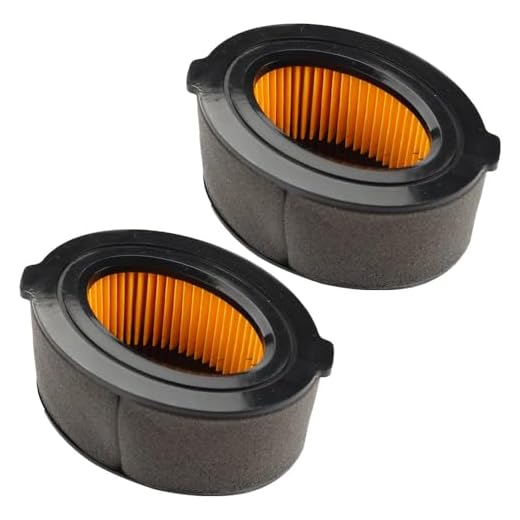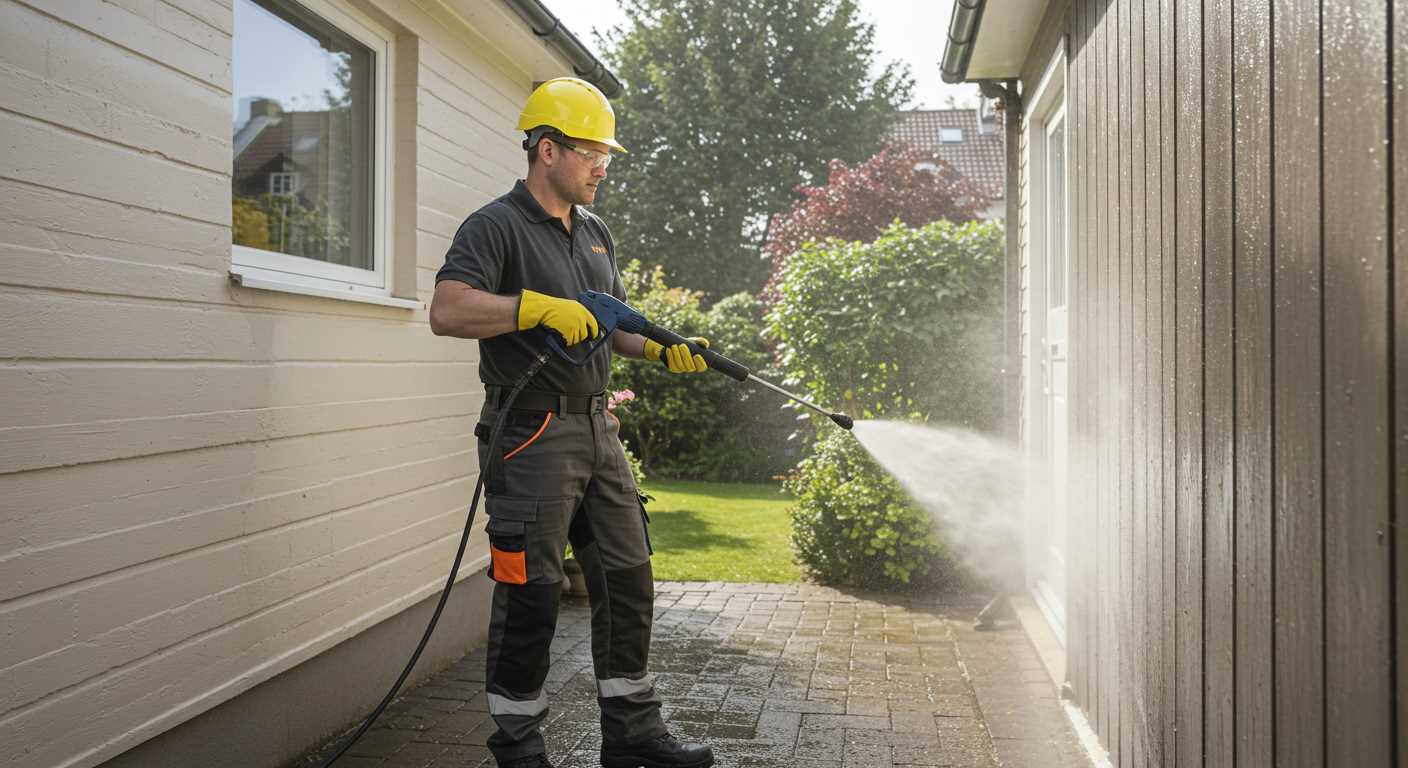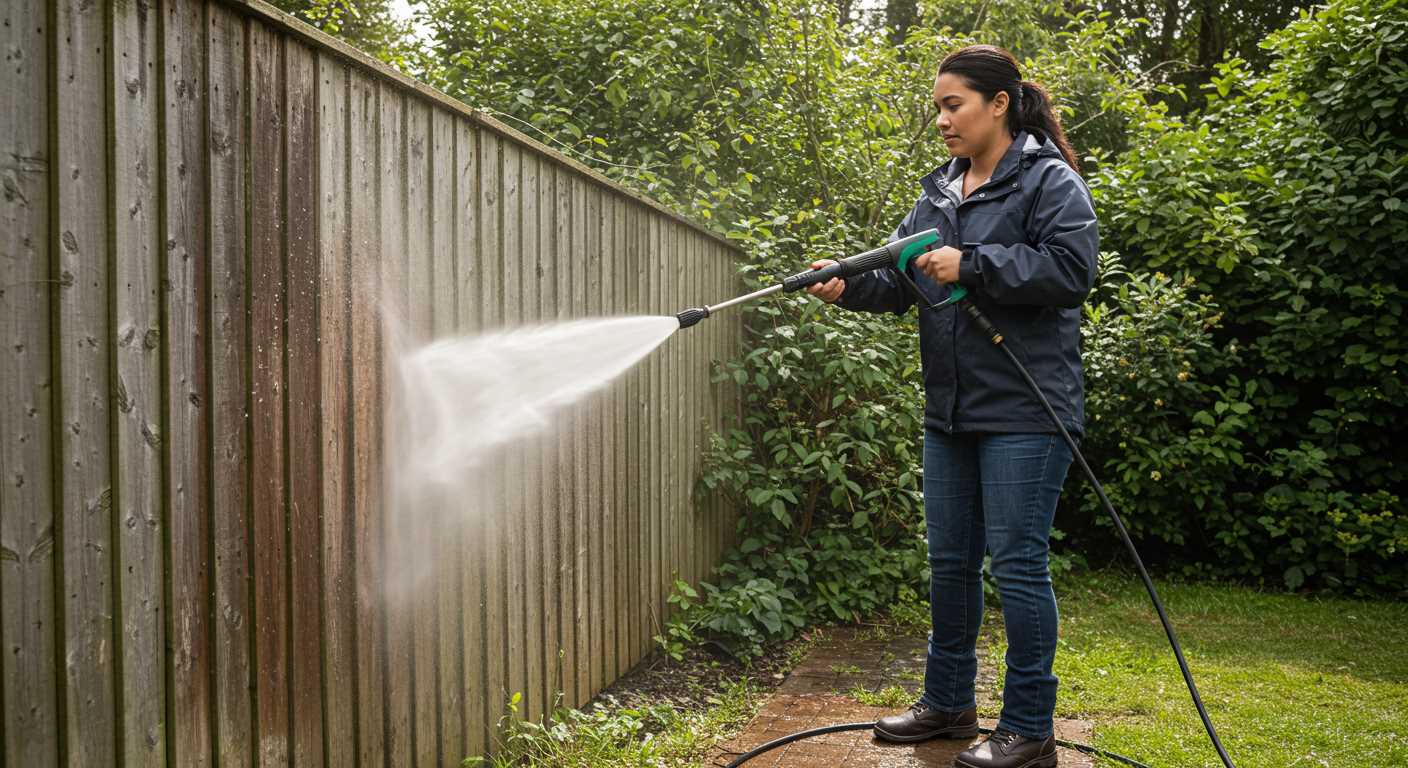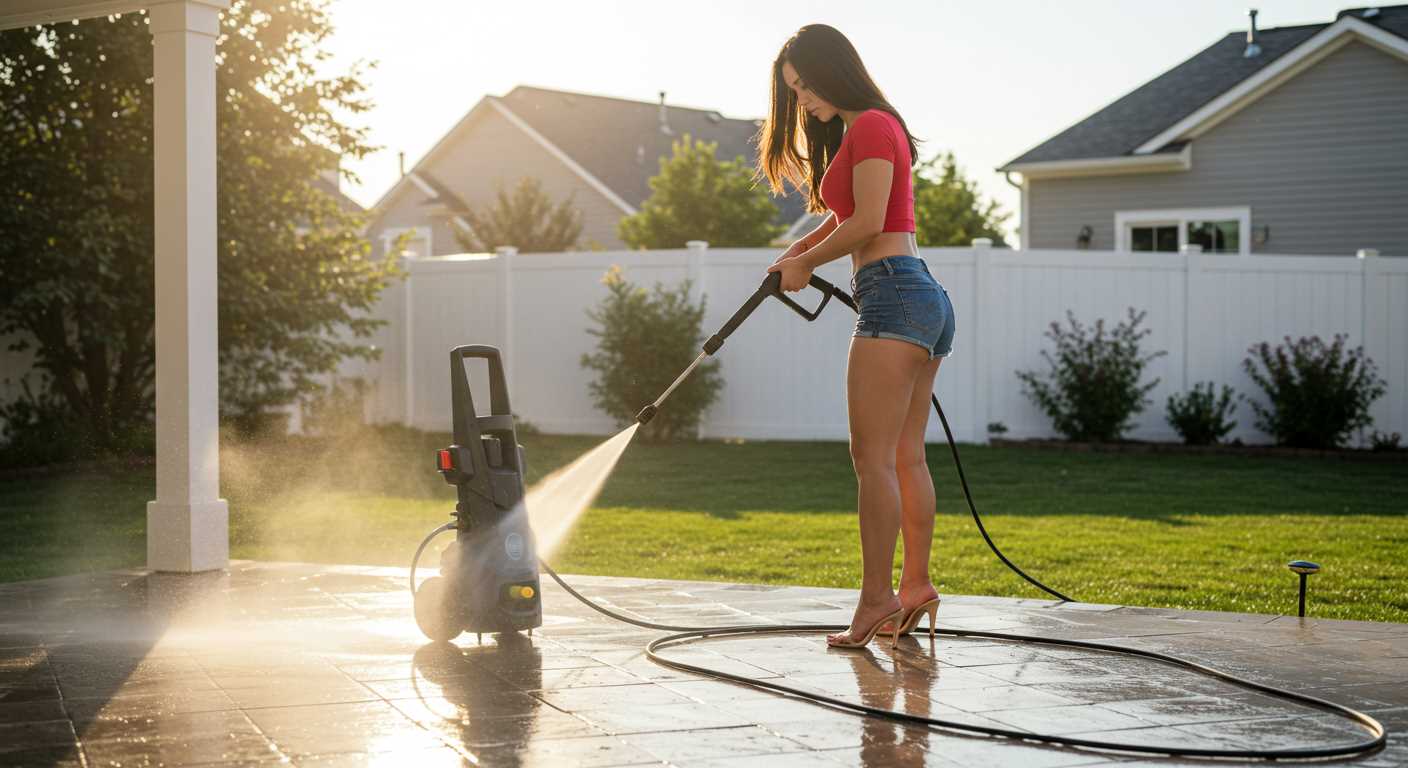



To troubleshoot ignition issues with your cleaning device, check the fuel mixture, ensuring it’s correct and not overly diluted. A simple ratio of 50:1 for two-stroke engines is generally recommended. If you’re using a four-stroke engine, ensure you’re using fresh fuel without ethanol to avoid potential problems.
Regular maintenance is key. Inspect the spark plug for wear or carbon build-up. A clean, correctly gapped spark plug can directly impact performance. If the spark plug shows signs of damage, replacing it may resolve ignition failures.
Another common reason for ignition issues is a clogged air filter. Blockages restrict airflow, leading to poor combustion. Regularly cleaning or replacing the air filter ensures optimal performance and prevents unnecessary strain on the engine.
Pay attention to the fuel lines; any cracks or leaks could lead to fuel starvation, resulting in starting difficulties. Ensure all connections are secure and free from obstructions. Periodic checks can save you from unexpected breakdowns.
Lastly, examine the carburettor for proper operation. If it’s malfunctioning, it can disrupt fuel delivery. A service or cleaning of the carburettor can often restore normal function and eliminate ignition problems.
Discover the Causes of Backfire Issues
To tackle backfire problems directly, I recommend checking the fuel mixture. An improper ratio can lead to combustion issues. Always ensure you’re using the correct fuel type for your motor. Incorrect fuel can cause misfiring and operational troubles.
Maintenance Tips
- Regularly replace air filters to maintain optimal airflow, preventing obstruction that might lead to backfire.
- Keep the spark plug in good condition. A worn or damaged spark plug can misfire, causing unwanted explosions.
- Inspect the carburettor for any blockages or leaks. Proper fuel flow is essential for smooth operation.
Common Symptoms

- Loud popping noises during operation.
- Difficulty starting the unit, or it stalls frequently.
- Excessive smoke or unusual smells while in use.
Take action on these signs promptly to avoid further complications. Periodic checks can save you from higher repair costs and extensive downtime.
Understanding the Mechanism of Backfiring in Cleaners
To mitigate the occurrence of this unsettling phenomenon in your high-pressure device, focus on fuel quality and ensure compliance with the manufacturer’s guidelines. Poor-quality fuel can lead to incomplete combustion, creating conditions ripe for disruptions. Always opt for fresh, clean fuel free of contaminants.
Malfunctions in components such as the carburettor directly contribute to erratic combustion. Regular maintenance is vital–clean or replace air filters and ensure that jets are unclogged. If the air-fuel mixture is inaccurate, it can lead to spikes in combustion pressure, causing pronounced disturbances during operation.
Ignoring ignition system issues can also set the stage for irregular performance. A worn spark plug, for instance, may fail to ignite the fuel-air mix efficiently, leading to sporadic firing. Inspecting and replacing components like spark plugs and ignition coils will maintain optimal functionality.
Moreover, the timing of the ignition process is crucial. If it occurs too late, the mixture ignites within the combustion chamber rather than in the intended cycle, resulting in audible disruptions. Carefully check timing settings, making adjustments as necessary to align with specifications.
Finally, excessive pressure in the system–whether from a blocked nozzle or faulty pressure regulator–can create backpressure that leads to those alarming sounds you might encounter. Periodically assess and clear any obstructions, ensuring the system’s relief valve operates smoothly.
Common Causes of Backfiring in Gas-Powered Cleaning Machines

In my extensive experience with various models of gas-operated cleaning devices, I’ve identified several key factors that can lead to unwanted expulsion of fuel. Addressing these issues promptly can prevent potential damage and enhance performance.
1. Improper Fuel Mixture

One prevalent reason for this issue is an incorrect fuel-to-oil ratio. A mixture that is too rich in oil can result in excess carbon buildup, causing misfire and releasing unburnt fuel. Always check the manufacturer’s guidelines for the correct mixture.
2. Clogged Fuel Filter
A restricted fuel filter hampers the fuel flow, leading to inconsistent combustion. Regularly inspect and replace the filter as needed to ensure optimal fuel delivery.
3. Dirty Carburettor

Fuel residue can accumulate in the carburettor, disrupting the air-fuel mixture. Cleaning the carburettor periodically ensures smooth operation. Pay special attention to jets and passages.
4. Faulty Spark Plug

A worn or fouled spark plug can cause inadequate ignition of the air-fuel mixture, resulting in backfiring. Inspect plugs regularly and replace them if they display signs of wear or carbon deposits.
5. Exhaust Blockage
Obstructions in the exhaust can trap gases and create back pressure, leading to misfire scenarios. Regularly check the exhaust system for signs of blockage and clean as necessary.
6. Timing Issues
Incorrect valve timing may lead to premature ignition or fuel expulsion during the exhaust stroke. Consult your user manual for timing adjustments if you’re familiar with engine mechanics.
7. Air Leaks
Leaky gaskets or hoses can introduce excess air into the combustion chamber, causing an erratic air-fuel ratio. Regularly examine seals and hoses for any signs of wear or damage.
8. Old Fuel
Using stale or contaminated fuel can lead to combustion issues. Always store fuel in a sealed container and replace any old fuel when starting your equipment.
9. Extreme Operating Conditions
Operating under unusual environmental conditions, such as high altitude or extreme temperatures, can affect engine performance and lead to misfires. Adjusting the carburettor settings accordingly can help counter these effects.
By addressing these common issues, you can significantly improve the longevity and reliability of your gas-powered cleaning machine. Regular maintenance and attention to detail will ensure a smoother, more efficient operation.
How Fuel Quality Affects Washer Performance
Using high-quality fuel significantly enhances the functionality of your cleaning equipment. Poor fuel quality can lead to incomplete combustion, resulting in irregular engine operation and increased emissions.
Key Effects of Fuel Quality
Here are some specific ways in which fuel quality impacts performance:
| Factor | Impact |
|---|---|
| Fuel Composition | Lower-grade fuels often contain additives or contaminants that can clog fuel filters and injectors. |
| Octane Rating | Fuels with inadequate octane ratings can cause knocking, which can lead to further damage over time. |
| Storage Time | Stale fuel loses its effectiveness, leading to hard starting and reduced power output. |
| Contaminants | Water and dirt in fuel can disrupt the combustion process, causing misfires and inconsistent performance. |
Best Practices for Fuel Use
To maintain optimal function, I recommend the following:
1. Always select fuel with a minimum octane rating as specified by the manufacturer.
2. Use fresh fuel, ideally within 30 days of purchase. Consider adding a fuel stabiliser if you plan on storing fuel for longer periods.
3. Regularly inspect and replace fuel filters to ensure efficiency.
4. Avoid mixing different types of fuel, as this can lead to unpredictable performance.
Adhering to these guidelines will not only enhance the functionality of your equipment but also extend its lifespan. Investing in quality fuel pays dividends in performance and reliability.
Diagnosing Ignition System Issues That Lead to Backfiring
First, inspect the spark plug. A dirty or worn spark plug often causes ignition failures, leading to erratic combustion. Remove it and check for carbon deposits or damage. Clean or replace it if necessary. Ensure the spark gap is set correctly, typically around 0.025 inches for most small engines.
Next, examine the ignition coil. A malfunctioning coil can disrupt the electrical current, resulting in incomplete combustion. Test the coil’s resistance with a multimeter. If the readings fall outside the manufacturer’s specifications, replace the coil.
Inspect the wiring and connectors within the ignition system. Look for frayed wires, loose connections, or corrosion. Tightening or replacing damaged components can significantly improve performance.
Review the timing settings as well. Incorrect timing may lead to backfires by igniting the fuel mixture at the wrong moment. Consult the owner’s manual for the proper timing adjustments and use a timing light to verify accuracy.
Lastly, consider checking the fuel system. An incorrect air-fuel mixture can affect combustion quality and lead to ignition problems. Ensure that the carburettor is clean and adjusted appropriately. A damaged diaphragm can also lead to issues; replace it if needed.
Impact of Clogged Air Filters on Pressure Washer Functionality

For optimal performance, ensuring the air filter is clean is critical. A clogged filter restricts airflow, leading to combustion issues, which can manifest as irregular engine behaviour and fuel inefficiency. Regular inspection and maintenance can alleviate this problem.
Symptoms of Filter Clogging
Noticing specific signs can indicate a blocked filter. These include difficulty starting the machine, reduced power output, and excessive exhaust emissions. Prompt action may restore proper functionality.
Maintenance Recommendations
To maintain the air filter, follow these steps:
| Step | Action |
|---|---|
| 1 | Consult the user manual for filter removal instructions. |
| 2 | Remove the filter and inspect for dirt and debris. |
| 3 | Clean the filter using compressed air or a soft brush. |
| 4 | If damaged, replace the filter to ensure efficient operation. |
| 5 | Reassemble and test the equipment to verify improvements. |
Maintaining a clean air filter not only enhances the run quality but also prolongs the lifespan of the equipment. Regular checks should become a part of routine servicing to prevent performance issues.
Preventive Maintenance Tips to Avoid Backfiring
Regularly inspect the fuel filter and replace it if dirty to ensure optimal fuel flow.
Check the spark plug for signs of wear or carbon buildup; clean or replace it as necessary to enhance ignition efficiency.
Keep the air filter clean. A clogged filter can restrict airflow, leading to incomplete combustion. I recommend cleaning or replacing it at least every season.
Change the oil after the first 20 hours of operation and then after every 50 hours thereafter. Fresh oil not only lubricates components but also aids in keeping the engine clean.
Examine all fuel lines for cracks or leaks. Damaged lines can lead to fuel system issues, which may contribute to operational instability.
Regularly service the carburettor to ensure it’s free from debris and functioning properly. Adjusting the air-fuel mixture settings can also optimise performance.
Maintain proper engine temperature by ensuring the cooling system is functioning correctly. Overheating can lead to operational issues, including misfiring.
Always use the manufacturer’s recommended fuel type. Poor quality fuel can cause knocking and misfiring effects that can damage the internal components over time.
Operate the equipment under recommended load levels. Overloading can place undue stress on the engine and ignition system, increasing the likelihood of misfiring.
Lastly, always consult the user manual for specific maintenance guidelines related to your particular model. Following these tailored recommendations will significantly reduce the chances of unexpected performance issues.
When to Seek Professional Help for Pressure Washer Backfiring
If you observe frequent and severe misfiring in your cleaning device, it’s time to consult a professional. Difficulty in starting the equipment combined with abnormal noise, consistent stalling, or excessive smoke indicates underlying issues beyond simple maintenance checks.
Frequent backfiring events that occur despite replacing spark plugs and inspecting ignition components suggest possible fuel or carburettor issues. When DIY methods fail, the expertise of a technician becomes vital.
If you’ve tried cleaning air filters and adjusting throttle settings without success, a professional’s evaluation of the fuel system can uncover clogged lines or contamination that may be causing performance problems.
For gas-operated units, complications in the fuel quality can manifest through erratic behaviour. When basic troubleshooting does not resolve these issues, turning to a specialist can provide solutions that prevent further damage.
In cases where you’ve performed regular maintenance, like oil changes and filter replacements, but the issues persist, it’s advisable to seek a qualified technician. They will possess the tools and experience to perform thorough diagnostics, identifying problems that may not be immediately apparent.
If the tool has been subjected to extreme conditions or heavy use, wear and tear could result in internal failures. Expert assistance is crucial to assess wear items and recommend necessary repairs or component replacements.
FAQ:
What causes a pressure washer to backfire while in use?
A pressure washer may backfire due to various reasons, often related to fuel and engine issues. One common cause is poor fuel quality or stale fuel, which can lead to incomplete combustion. Another possibility is a faulty spark plug, which might not ignite the fuel properly, causing misfires. Additionally, incorrect air and fuel mixture settings can also result in backfiring, as the engine struggles to operate efficiently. Regular maintenance, including checking the spark plug and replacing old fuel, can help prevent these issues.
How can I troubleshoot a backfiring problem in my pressure washer?
Troubleshooting a backfiring issue in your pressure washer involves several steps. First, check the fuel; ensure it is fresh and of the correct grade. Next, inspect the spark plug for wear or carbon build-up—if necessary, replace it. Examine the air filter to ensure it is clean and allowing adequate airflow. Additionally, check the fuel lines for clogs or leaks. If you’ve adjusted the air-fuel mixture recently, revert to the manufacturer’s specifications. If the issue persists after these checks, consider consulting a professional technician for further diagnosis.
Is backfiring in a pressure washer dangerous?
Yes, backfiring in a pressure washer can pose safety risks. While it may not always indicate a severe problem, it can lead to engine damage over time if left unaddressed. Moreover, backfiring may produce flames and loud noises, which could startle the operator and lead to accidents. In some cases, it might indicate a more serious issue, such as a fuel leak or improper combustion, which should be investigated promptly. Regular maintenance and immediate attention to any backfiring can help ensure safety and prolong the life of your pressure washer.








